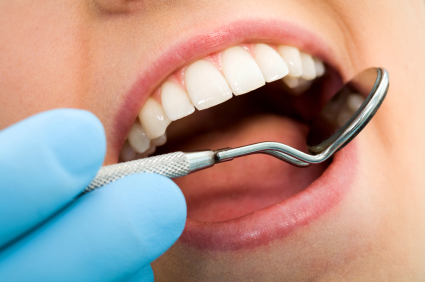
Dental cleanings and examinations are two different procedures that are typically performed in a single appointment, but involve different things that are equally important for your long-term oral health.
Dental Cleaning
Professional teeth cleaning requires the dentist to use special instruments to remove calculus (hardened plaque) from the surface of your teeth and polish them. Generally, your dentist will:
- Remove accumulated plaque and tartar using special tools, such as a metal scaler that physically scrapes off the built-up bacteria, or an ultrasonic scaler that uses vibration.
- Squirt water into your mouth to rinse of the plaque. A suction tool will also be applied in your mouth to suck the water out immediately
- Polished the teeth using a gritty toothpaste, and then floss them.
Dental Exam
During a dental examination, the dentist visually inspects your mouth using a mirror and small instruments, including a probe to test the surface of each tooth. This is intended to
- Examine teeth, checking for signs of decay, sensitivity, grinding, or excess tooth wear
- Evaluate your gums for signs of swelling, bleeding, or irritation. Your gum pockets will also be measured to check for gum recession
- Evaluate your bite and temporomandibular joint (TMJ), checking for proper alignments and shift in your bite (underbite, overbite, or crooked bite)
- Check the soft tissues in your mouth, including the texture and size of your tongue, tonsils and throat for signs of infection, and salivary glands for proper saliva secretion
- Complete an oral cancer screening to check for signs of infection around your cheeks, tongue, palate, neck, head, and lymph nodes
- Take dental X-rays for diagnostic information about non-visible parts of your mouth, including the underlying bone structure
After both processes, you can consult with your dentist about any existing oral health issues you’re concerned about, as well as get your questions answered about your dental health.